Are you searching for a healthier, gluten-free, natural substitute for spelt flour? Look no further!
Spelt is a type of wheat that can be used to make bread, pastries, pancakes, and more.
Here we will cover everything you need to know about substitutes for spelt flour so that your recipes can remain delicious yet still nutritious.
What Is Spelt Flour?
Spelt flour is whole-grain flour used for centuries in baking and other cooking.
It is made from the ancient grain spelt, similar to wheat but higher in protein and many nutrients.
Spelt flour has a mild nutty flavor and can be used to make bread, muffins, pancakes, cookies, and other baked goods.
It is also a great substitute for wheat flour in recipes that don’t require much rise or gluten development.
When baking with spelt flour, you may need to add liquid or use a higher liquid ratio to dry ingredients than regular wheat flour.
Additionally, note that spelt flour does not rise as much as wheat flour, so increasing the baking powder or soda in a recipe can be beneficial when using spelt.
Spelt flour is also great for making savory dishes like pizza crusts, pasta dough, and biscuits.
With its unique flavor and helpful nutritional benefits, spelt flour is becoming more widely available in stores and online.
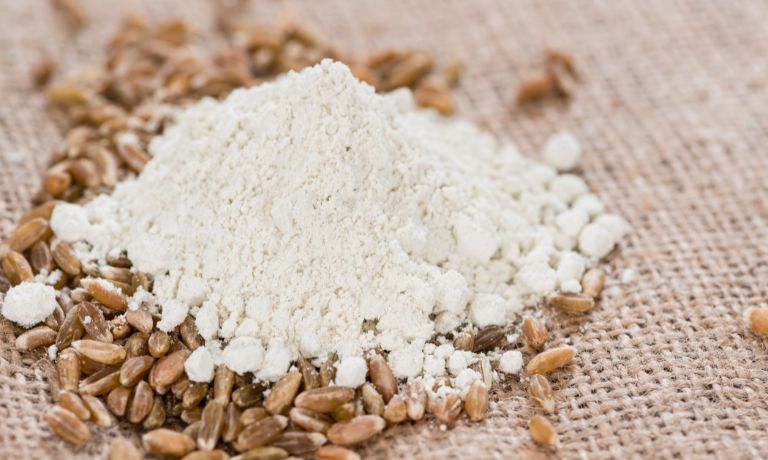
Substitutes For Spelt Flour
If you’re looking for a substitute for spelt flour, many options are available.
Wheat Flour
Wheat flour is a type of flour made from finely milled wheat grains.
It is the most commonly used flour in baking and cooking and can be found in many types, including all-purpose, bread, cake, pastry and whole wheat flour.
[display-posts id=”2042″ image_size=”thumbnail” posts_per_page=”1″]
Wheat flour is an excellent substitute for spelt flour in cooking because it has a light, neutral taste that won’t overpower the other flavors in a recipe.
Its high gluten content makes it ideal for baking, and its white color helps retain the hue of dishes like cakes and pastries.
Wheat flour is also more affordable than spelt flour which can be difficult to find in some parts of the world.
Additionally, wheat flour has a longer shelf life than spelt flour, making it an ideal choice for baking in bulk.
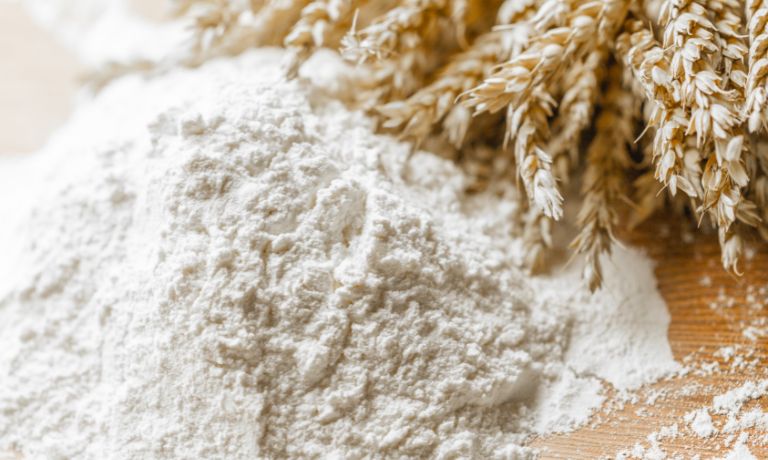
Almond Flour
Almond flour is a gluten-free flour made from ground-blanched almonds.
It has a light, slightly sweet taste and can be used as an alternative to other grain-based flour in baking.
Because almond flour does not contain any of the glutens found in wheat, barley, and spelt, it may be safer for those who are gluten intolerant or have celiac disease.
Almond flour is a great substitute for spelt flour in baking because it is high in protein, fiber, and healthy fats.
Additionally, almond flour has a lower glycemic index than other flour, meaning baked goods made with almond flour won’t cause dramatic spikes in blood sugar levels.
Almond flour is also rich in vitamins and minerals, making it a nutritious alternative to traditional white flour.
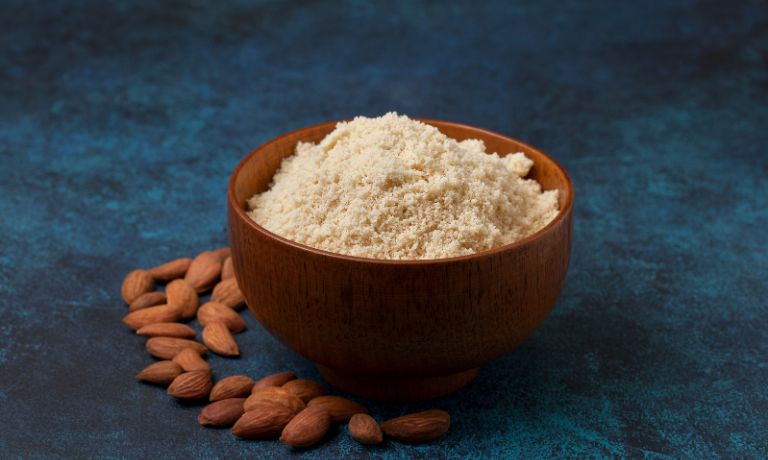
Einkorn Flour
Einkorn flour is a whole-grain flour milled from the ancient grain einkorn (Triticum monococcum).
It’s an heirloom wheat variety that dates back to 5,000 BC and is still grown in some areas of Europe today.
[display-posts id=”2407″ image_size=”thumbnail” posts_per_page=”1″]
Einkorn flour is rich in flavor and soft, making it ideal for baking.
It is also high in fiber, protein, vitamins A, B2, and C, and minerals like potassium and magnesium.
Einkorn flour can be an alternative to other ancient grains such as spelt or farro.
It has a mild flavor that allows it to blend with other ingredients without overpowering them.
It also has a lower gluten content than most other types of wheat flour, making it easier to digest for those sensitive to gluten.
Because of its low gluten content, einkorn flour is a great option for baking recipes that require gentle handling.
Coconut Flour
Coconut flour is a gluten-free, healthy alternative to wheat and other flour.
It is made from mature coconut dried and ground meat, and has a slightly sweet, nutty taste.
With its high fiber content, coconut flour can help lower cholesterol levels and manage weight.
It’s also a great source of protein and essential fatty acids.
Coconut flour is a perfect substitute for spelt flour in baking, as it can be used to create a variety of sweet or savory dishes such as cakes, muffins, pancakes, and cookies.
It absorbs liquid better than all-purpose flour, so recipes requiring coconut flour require more liquid than those made with wheat flour.
Because of this, recipes that use coconut flour may not rise as much and will generally have a denser texture.

Rice Flour
Rice flour is made from finely ground white rice and is commonly used as a wheat and all-purpose flour substitute.
It has a mild flavor and light texture and works well when baking cakes, muffins, bread, and other baked goods.
[display-posts id=”2394″ image_size=”thumbnail” posts_per_page=”1″]
Rice flour can also thicken sauces or soups instead of cornstarch.
It is a great option for gluten-intolerant people because it does not contain gluten.
Additionally, the texture of the rice flour makes it an ideal choice for people who prefer lighter baked goods with delicate crumb structures.
It can be used as a substitute for spelt flour in many recipes and combined with other grains and flour to create an interesting flavor profile.
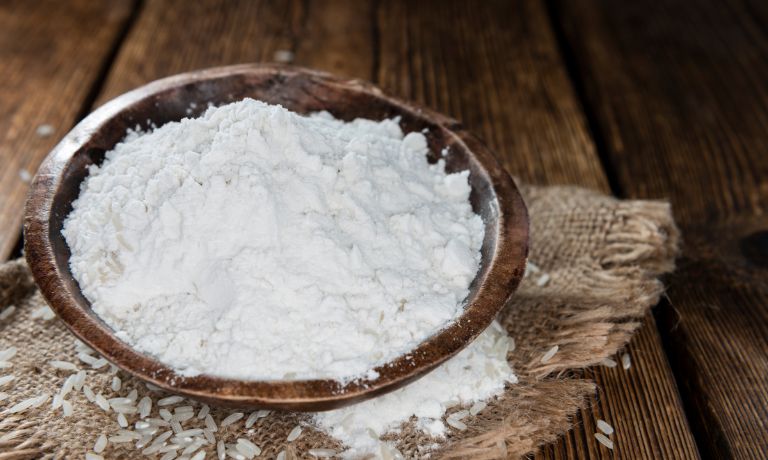
Barley Flour
Barley flour is made from ground, whole-grain barley and is a rich source of dietary fiber.
Its nutty flavor can be used to make bread, cakes, pancakes, muffins, and other baked goods.
Additionally, barley flour may be used as a wheat flour substitute in recipes that call for spelt or other types of wheat flour.
It is also a good source of dietary fiber and protein, phosphorous, magnesium and B vitamins – all necessary to maintain proper health.
Barley flour is gluten-free and can be used instead of spelt or wheat flour for those with celiac disease or gluten sensitivity.
It also has a low glycemic index, meaning it’s good for people with diabetes or those trying to lose weight.
Barley flour can be found in most health food stores and some supermarkets.
Kamut Flour
Kamut Flour is a type of ancient grain similar to spelt flour. It has a nutty flavor and higher protein content than regular wheat flour.
Kamut is also high in minerals and vitamins such as zinc, magnesium, phosphorus, and B vitamins.
[display-posts id=”2341″ image_size=”thumbnail” posts_per_page=”1″]
In many recipes, kamut flour can be used as a substitute for spelt flour.
It has a lighter texture and flavor than regular wheat flour and is more nutritious.
When baking with Kamut flour, you may need to add extra liquid as it absorbs moisture more slowly than other flours.
You can substitute up to 25% of the regular wheat flour in a recipe with Kamut flour for a more nutrient-rich and flavorful outcome.
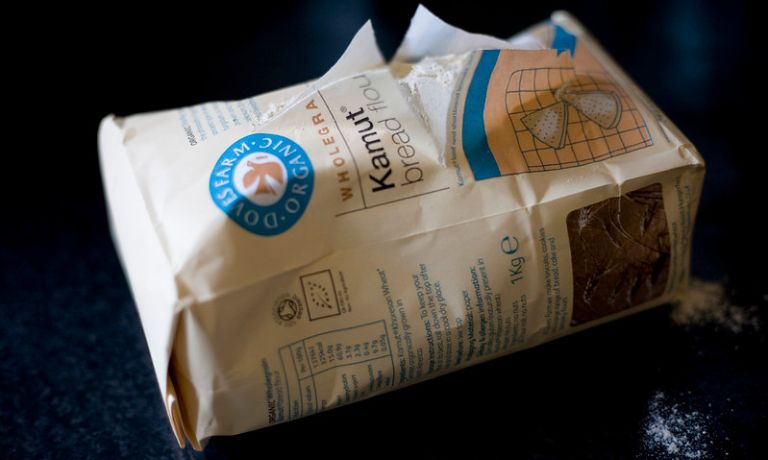
Amaranth Flour
Amaranth flour is a gluten-free flour made from the whole grain amaranth.
Amaranth has been cultivated by civilizations worldwide for over 8,000 years and has an impressive nutritional profile.
It is rich in proteins, minerals, vitamins, fiber and essential fatty acids.
As such, amaranth flour is a great vegan option for baking and cooking.
Amaranth flour can be used as a direct substitute for spelt flour in many recipes.
It has a slightly nutty flavor that adds depth to baked goods and savory dishes.
As gluten-free, amaranth flour is often used with other gluten-free flour such as tapioca, coconut, or almond flour.
This combination creates a more complex flavor that is both nutty and sweet.

FAQs
What Other Grain Resembles Spelt?
Many grains have a similar appearance to spelt, including farro, Kamut and wheat berries.
While other grains may look like spelt, they are not the same as spelt and will offer different nutritional profiles.
Can Bread Flour Be Used In Place Of Spelt?
Yes, bread flour can be used as a substitute for spelt.
Bread flour is higher in gluten than spelt, which may help give baked goods more structure and a chewier texture.
Can You Use Oat Flour In Place Of Spelt Flour?
Yes, oat flour can be used in place of spelt flour.
Remember that oat flour is much less absorbent than spelt flour and may require adjustments to the recipe, such as adding extra liquid or an additional leavening agent.
Conclusion
Spelt flour is a nutritious and versatile alternative to wheat flour.
It can be used as a substitute for other types of flour, such as white, all-purpose or whole wheat flour.
There are also many other healthy grain-based flours, including coconut, rice, kamut, amaranth, and barley flour.
These flours offer various nutritional benefits and can be used as a substitute for spelt flour in recipes.
When baking with any alternative flour, follow the recipe closely and adjust liquid and other ingredients as needed to ensure an optimal outcome.

